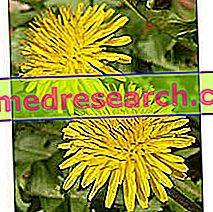ZINDACLIN ® is a drug based on Clindamycin phosphate
THERAPEUTIC GROUP: Antibiotics- Antiinfectives for the treatment of acne
IndicationsAction mechanismStudies and clinical effectiveness Usage and dosage instructionsWarnings Pregnancy and lactationInteractionsContraindicationsUndesirable effects
Indications ZINDACLIN ® Clindamycin
ZINDACLIN ® is indicated for the treatment of mild to moderate acne.
Mechanism of action ZINDACLIN ® Clindamycin
ZINDACLIN ® is a drug particularly effective in treating acne vulgaris thanks to the ability, after topical administration, to concentrate in comedones at therapeutic doses useful to inhibit the proliferation of Propionibacterium acnes .
More precisely, the aforementioned bacteriostatic activity is mediated by the active principle of ZINDACLIN ®, namely Clindamycin, a semi-synthetic antibiotic derived from Lincomycin by halogenation, belonging to the lincosamides family and known for its ability to bind the 50S ribosomal subunit and thus inhibit the elongation reaction of the peptide chain mediated by the enzyme peptidyltransferase.
Despite the high efficacy of this active ingredient, different studies show that prolonged use of Clindamycin can easily induce the proliferation of therapy-resistant microorganisms thanks to the increased expression of efflux pumps on the plasma membrane, of enzymes with hydrolytic activity in the cytoplasm and modification of the binding target.
The increased spread of these microorganisms is responsible for the gradual reduction of the efficacy of antibiotic therapies.
Studies carried out and clinical efficacy
1. ANTI-INFLAMMATORY PROPERTIES OF THE CLINDAMYCIN
Cutis. 2010 Jan; 85 (1): 15-24.
Review that describes a double action of Clindamycin in the treatment of acne. In fact, in addition to performing its classic antibiotic therapeutic action, it has also proved to be effective as an anti-inflammatory, reducing the severity of the lesions present in medium and severe acne.
2. THE CLINDAMYCIN IN THE TREATMENT OF ACNE IN COLOR PATIENTS
J Drugs Dermatol. 2012 Jul; 11 (7): 818-24.
Multicenter study that shows how topical therapy with Clindamycin phosphate for the treatment of moderate or severe acne, can be effective and well tolerated even in black patients, without showing any type of alteration of normal pigmentation.
3.MICRORGANISMS RESISTANT TO ANTIBIOTIC THERAPY IN PATIENTS WITH ACNE
J Dermatol. 2012 Oct; 39 (10): 833-7.
Interesting work that demonstrates the presence and the possibility of isolating microorganisms resistant to antibiotic therapy in patients with Acne.
This condition significantly reduces the effectiveness of antibiotic therapy and consequently also the possible therapeutic response.
Method of use and dosage
ZINDACLIN ®
Gel for cutaneous use with 1% Clindamycin.
We recommend applying the right amount of gel to the skin region affected by the acne process once a day for up to 12 weeks.
It is recommended not to use the medicine in children under 12 years.
Warnings ZINDACLIN ® Clindamycin
Fortunately, topical use of Clindamycin significantly reduces the incidence of some side effects, such as persistent diarrhea and pseudomembranous colitis, which are particularly frequent with systemic therapy.
However, it should be remembered that the frequent and prolonged use of this medicine could lead to the onset of multi-resistant microbial strains and therefore immune to the common antibiotic therapy.
It is recommended to avoid the application of ZINDACLIN ® on non-intact skin, in order to reduce the systemic absorption of the product and the irritative effect of propylene glycol.
PREGNANCY AND BREASTFEEDING
The reduced systemic absorption of the antibiotic applied topically and the absence of studies able to demonstrate the toxicity of the product on the fetus, significantly reduce the possible contraindications to the use of ZINDACLIN ® during pregnancy.
It would be preferable, however, to evaluate the prescriptive appropriateness during the gestational period with your doctor, but taking care to stop the therapy during breastfeeding.
Interactions
Topical use of Clindamycin significantly reduces the risk of systemic interactions with other active ingredients.
However, it would be useful to avoid the simultaneous intake of other antibiotics.
Contraindications ZINDACLIN ® Clindamycin
The use of ZINDACLIN ® is contraindicated in patients with known hypersensitivity to the active ingredient or to one of its excipients.
Undesirable effects - Side effects
In contrast to systemic therapy, topical use of Clindamycin could lead to side effects such as dry skin, erythema, burning, pericoular irritation, itching and skin rash.
Gastro-enteric side effects are decidedly more rare.
Note
ZINDACLIN ® is a prescription-only drug.



